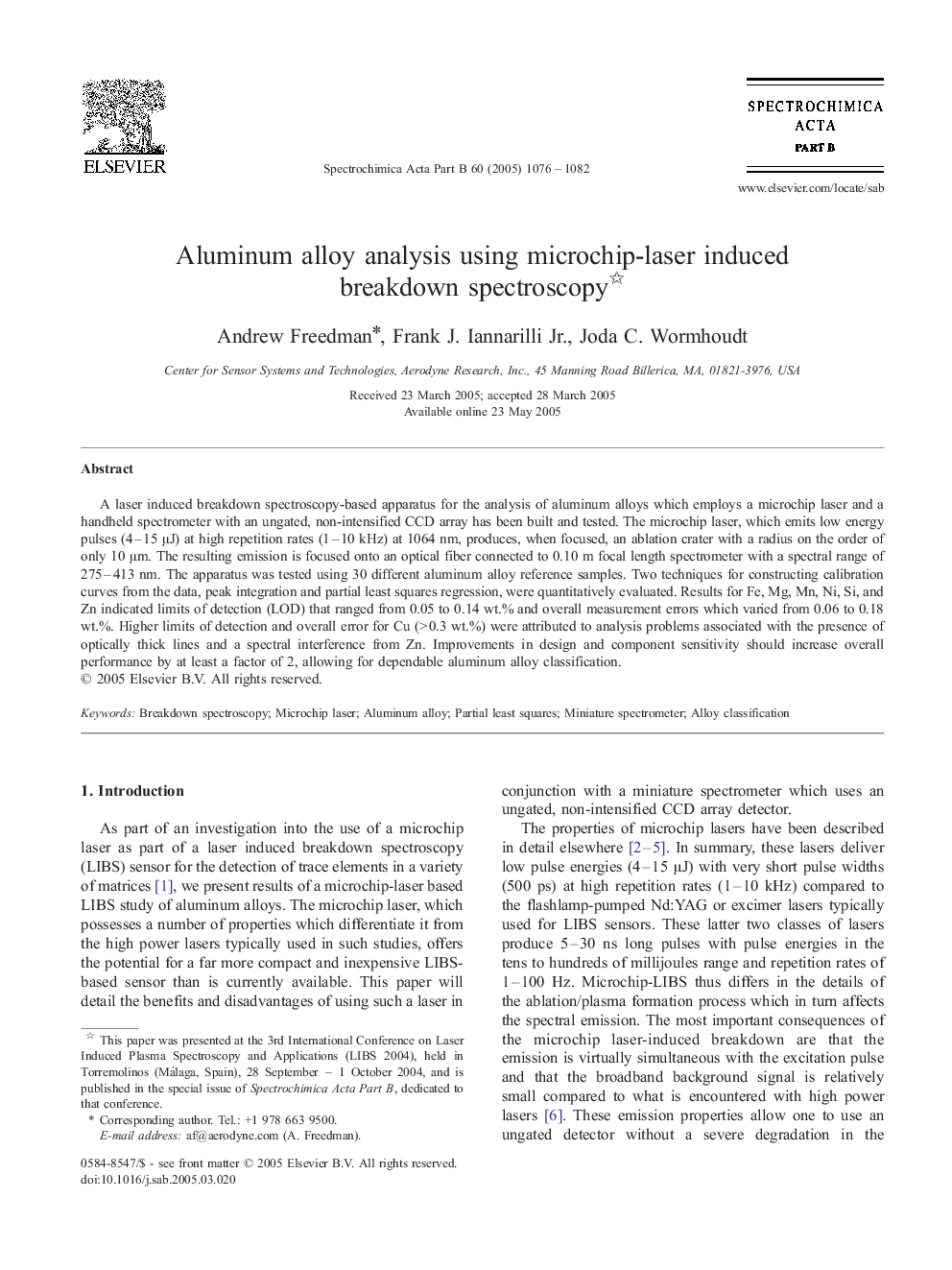| Article ID | Journal | Published Year | Pages | File Type |
|---|---|---|---|---|
| 9757247 | Spectrochimica Acta Part B: Atomic Spectroscopy | 2005 | 7 Pages |
Abstract
A laser induced breakdown spectroscopy-based apparatus for the analysis of aluminum alloys which employs a microchip laser and a handheld spectrometer with an ungated, non-intensified CCD array has been built and tested. The microchip laser, which emits low energy pulses (4-15 μJ) at high repetition rates (1-10 kHz) at 1064 nm, produces, when focused, an ablation crater with a radius on the order of only 10 μm. The resulting emission is focused onto an optical fiber connected to 0.10 m focal length spectrometer with a spectral range of 275-413 nm. The apparatus was tested using 30 different aluminum alloy reference samples. Two techniques for constructing calibration curves from the data, peak integration and partial least squares regression, were quantitatively evaluated. Results for Fe, Mg, Mn, Ni, Si, and Zn indicated limits of detection (LOD) that ranged from 0.05 to 0.14 wt.% and overall measurement errors which varied from 0.06 to 0.18 wt.%. Higher limits of detection and overall error for Cu (> 0.3 wt.%) were attributed to analysis problems associated with the presence of optically thick lines and a spectral interference from Zn. Improvements in design and component sensitivity should increase overall performance by at least a factor of 2, allowing for dependable aluminum alloy classification.
Related Topics
Physical Sciences and Engineering
Chemistry
Analytical Chemistry
Authors
Andrew Freedman, Frank J. Jr., Joda C. Wormhoudt,
